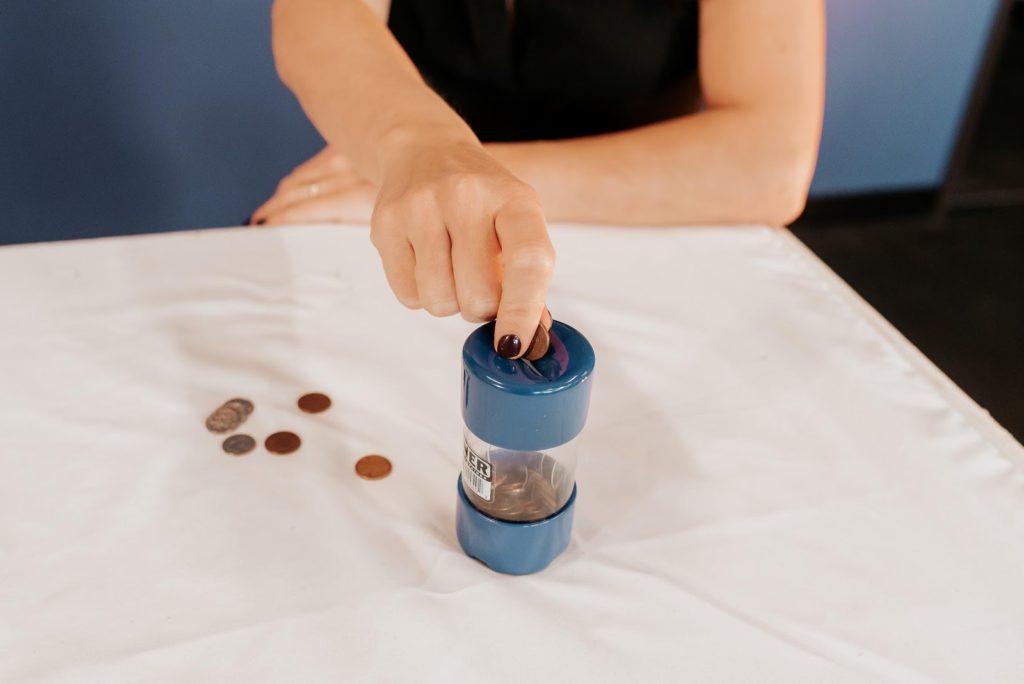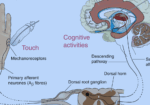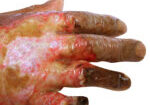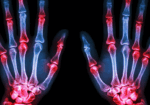How to Use Translation for Improving Fine Motor Skills after a Hand Injury:
Filed under Treatments
I’m always looking for new therapy ideas. I want to keep my patients interested and engaged in therapy. I also want to keep things functional and task oriented. So much of what we do with our hands is about fine motor coordination and dexterity, and that is so hard to duplicate in a clinic setting. Using translation gives me a task to work on fine motor skills and dexterity that is gradable and functional.
So, How does it work?! What fine motor exercises for hands are there?

The Basics of fine motor skills therapy – I lay a pile of small objects on the table and an open container for the client to put them into. What object I use depends on the client’s level. We’ll get to that later. Then, they use a 2-point pincer grasp to pick up one and shift it finger-to-palm. They do this a 3-4 more times. Each time shifting it fully to the palm. Then the objects are taken, one at a time, from palm to pincer grasp and dropped into the container.
“Using translation gives me a task to work on fine motor skills and dexterity that is gradable and functional.”
Special Rules – To keep the client from cheating and to meet the purpose of the task we have a few special rules.
- No using momentum to ‘throw’ the object from palm to finger. They need to use finger and thumb motion to advance the object.
- No using gravity to let the object fall from palm to fingers. AKA: no cheating
- Take it all of the way to the tips of index and thumb. It’s harder but it matters.
Make it fit – This task is highly scalable to meet the client’s needs and the ‘just right challenge’. Here is the sequence I use as the client improves:
- Slow foam squares cut into ¾” squares
- Squares mixed with marbles (pick up 2 of each) and sorting them for sensation work.
- Mancala pieces or just plain marbles
- Coins – Pick them up off a towel if flat on a table is too much
Bonus!! – Aside from the obvious benefits there are a few other added extras that pop up. Sometimes I even use these as the primary reason for picking this task.
Supination/pronation – The forearm is pretty darn active during this whole process
Tactile work – Stereognosis and discrimination skills can be refined with this task
Thumb work – When done right, the thumb is getting a solid workout (e.g. Joint stiffness work)

Whatever you want…
This task can be converted into whatever you want it to be. Use dice to play a game. Use grapes or other food for a self feeding goal. Use small beads and work on ‘storing’ the extras in the ulnar side of the palm while stringing the bead. The options are ENDLESS! This is one of my favorite tasks and I can’t wait for you to try it and tell us what you think.
6 Comments
Leave a Comment
More To Read
Peripheral nerve injury: A hand therapist’s assessment of sensory return.
Sensory return after a hand injury specifically a peripheral nerve injury After a peripheral nerve injury, there are often times impairments in sensory function and/or motor function. The rate of recovery varies based on the degree of injury, the overall health of the patient, and the patient’s age. After an injury, it is important…
Read MoreThe Importance of Purposeful Activities Following Surgical Repair of a Distal RadiusFracture
By: Kelsey Melton Collis, J. M., Mayland, E. C., Wright-St Clair, V., Rashid, U., Kayes, N., & Signal, N.(2022). An evaluation of wrist and forearm movement during purposeful activities andrange of movement exercises after surgical repair of a distal radius fracture: A randomizedcrossover study. Journal of Hand Therapy. https://doi.org/10.1016/j.jht.2022.07.009 The Skinny: This randomized crossover study…
Read MoreOrthotic Options for Hand Burns
By: Sophia Grimm Hand burns can be very challenging to treat, and successful rehabilitation begins early after acute injury. Following a burn injury, scar contractures are the primary reason for the deformity of the hand. Therefore, proper orthotic intervention is key to preventing joint and ligament contractures (Kelly, Berenz & Williams, 2019). Splinting goals following…
Read More7 Tips for your Osteo Arthritis Patients!
7 Tips for your OA Patients! Managing Osteoarthritis in the Hand Our hands are one of the most intricate structures in the human body. They are composed of a network of tendons, ligaments, and nerves that make it possible to perform daily tasks such as unlocking a door, peeling an egg, or sending an email…
Read MoreSign-up to Get Updates Straight to Your Inbox!
Sign up with us and we will send you regular blog posts on everything hand therapy, notices every time we upload new videos and tutorials, along with handout, protocols, and other useful information.







I could not refrain from commenting. Perfectly written!
Thanks! Glad you liked it.
It´s such a great exercise! Thank you for the Idea!
I used buttons of different sizes and let my patients stack them to little towers.
I must appreciate the way you have expressed your feelings through your blog!
I was searching, I SaW YoUr Blog, I ReAd YouR Blog, You Surprised Me. This is the Day, I HaVe learned a Good Thing by ReaDinG!
Thank you so much, this information is invaluable, fell and broke my wrist, was allowed a few weeks of therapy, but your suggestions along with what I learned in therapy is wonderful.. By the way the first fall to injure my self at 85